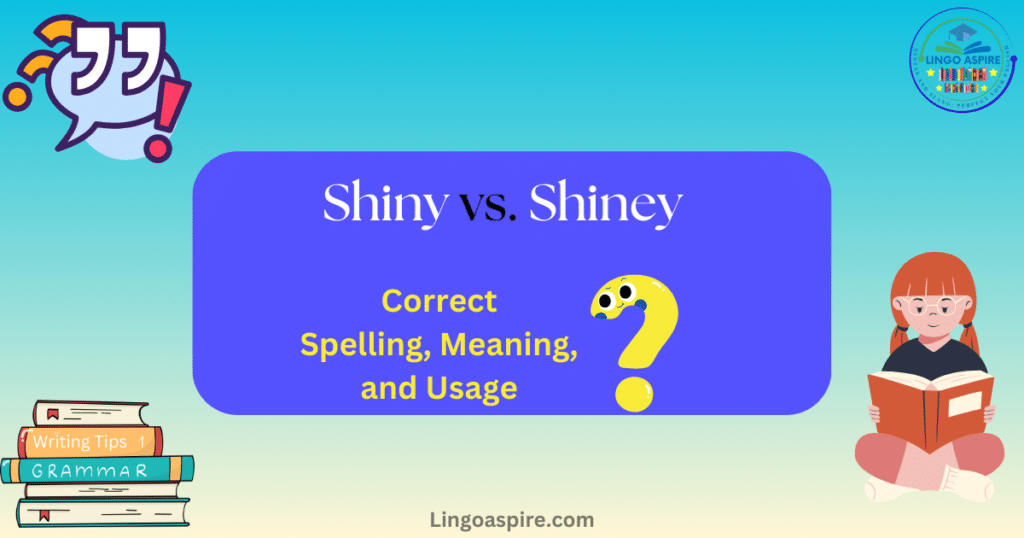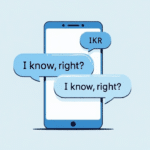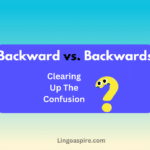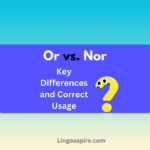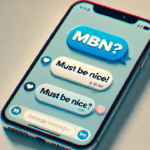Understanding the correct spelling of words is important in communication. One common confusion people face is the difference between shiny vs. shiney. While these words may look similar, only one is correct in standard English. This article will explore the correct spelling of “shiny”, why “shiney” is a misspelling, and how to use these terms correctly.
Mistakes like writing “shiney” often happen because English spelling can be tricky. By learning the rules and patterns behind words like “shiny”, you can avoid such errors. This guide will also cover the origin, usage, and importance of accurate spelling in communication.
Shiny vs. Shiney: Which is Correct?
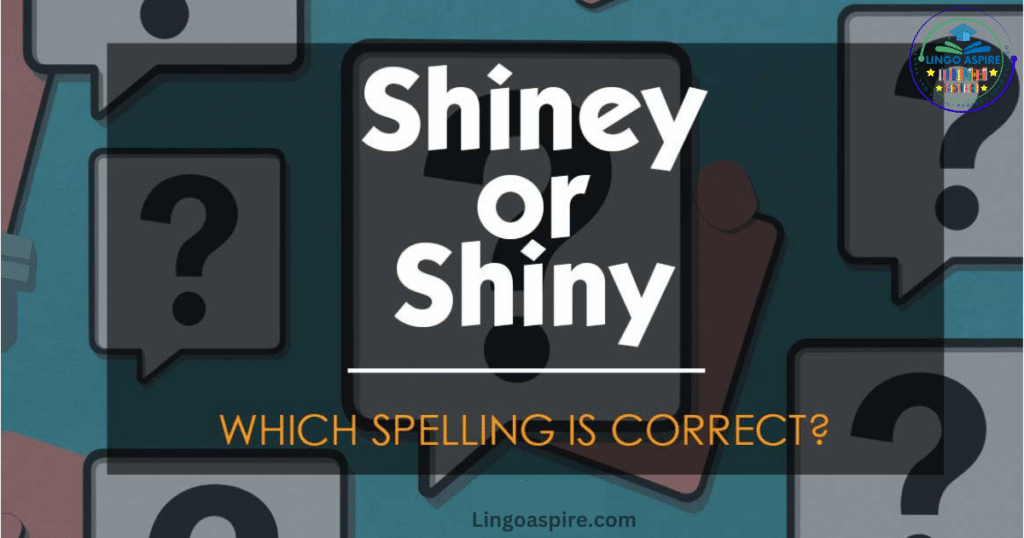
The correct spelling is “shiny”. It is an adjective that describes something that reflects light or appears bright and polished. For example, you might say, “The car’s surface is so shiny that I can see my reflection.”
On the other hand, “shiney” is a common misspelling of the word. People often write it this way because it seems logical based on the root word, “shine.” However, English spelling rules dictate that when adding “-y” to words ending in “e,” the “e” is usually dropped, as in shiny, spiny, and bony.
Here’s a simple table comparing the two:
| Word | Correctness | Meaning | Examples |
|---|---|---|---|
| Shiny | Correct | Bright or reflective | “The shiny surface caught my eye.” |
| Shiney | Incorrect | Misspelled word | “She polished the table until it was shiney.” (Wrong) |
Why Is “Shiny” the Correct Spelling?
The word “shiny” comes from the verb “shine”, which means to emit or reflect light. According to English spelling rules, adjectives like “shiny” drop the silent “e” before adding “-y.” This rule applies to many words, such as “spiny” (from spine) and “bony” (from bone).
Grammarians and linguists explain that spelling patterns in English are designed to simplify pronunciation and writing. Words like “shiney” break this pattern and make the language inconsistent. That’s why “shiny” has remained the standard form for centuries.
Interestingly, historical records show that “shiney” was occasionally used in older texts, but it was always considered non-standard. Over time, the correct spelling, “shiny”, became widely accepted in dictionaries and professional writing.
Reasons for the “Shiney” Misspelling
People often confuse “shiny” and “shiney” because of the root word “shine.” It seems logical to keep the “e” before adding “-y”, but this doesn’t follow adjective spelling patterns in English.
Another reason for the error is phonetic confusion. The pronunciation of “shiny” sounds the same as “shiney,” which can mislead writers. This mistake is common among English learners and even native speakers who are not familiar with grammar insights or linguistic patterns.
Additionally, the similarity between shiny and other words, like “spiney” (less common spelling of “spiny”), adds to the confusion. However, modern usage overwhelmingly favors “shiny.”
Examples of Shiny vs. Shiney in Sentences
Examples help clarify the correct usage of words. Here are some sentences using “shiny” correctly:
- The shiny diamond sparkled under the light.
- After washing his car, the paint looked bright and shiny.
- She bought a pair of shiny shoes for the party.
Now, let’s see incorrect examples with “shiney”:
- The shiney floor reflected the sunlight.
- He admired the shiney coins in the collection.
- The mirror wasn’t as shiney as it used to be.
Notice how the misspelled word disrupts the flow of writing. Correcting these errors improves the clarity and professionalism of your work.
Usage
The sources provided can be used to enhance your understanding of the topic and validate the information in your article. Here’s how you can use each:
- Merriam-Webster Dictionary:
Use this source to confirm the definition, origin, and correct spelling of “shiny”. It will help clarify the word’s meaning and why “shiney” is incorrect. Additionally, you can explore related synonyms like glossy, polished, and bright, which tie into the topic. - Cambridge English Dictionary:
This source can be helpful for examples of proper usage and understanding English spelling rules. It offers insights into common mistakes and adjective spelling patterns, providing a solid foundation for explaining the linguistic aspects of the topic. - Grammarly Blog:
Grammarly’s blog can give detailed information on why spelling accuracy matters in professional communication. You can use this resource to highlight the importance of correct spelling, discuss the impact of errors on clarity, and provide tips for avoiding misspelled words like “shiney.”
The Importance of Spelling Accuracy
Spelling plays a crucial role in professional communication. Errors like writing “shiney” instead of “shiny” can make your work appear careless. For instance, in resumes, business emails, or academic papers, mistakes can reduce your credibility.
Additionally, misspelled words can confuse readers. In some cases, the meaning of a sentence might change entirely. Accurate spelling reflects attention to detail, which is valued in both personal and professional settings.
Synonyms and Related Words for Shiny
The word “shiny” has several synonyms that can be used depending on the context. These include:
- Glossy: Often used for magazines, photos, or polished surfaces.
- Polished: Refers to something smooth and reflective, like polished wood.
- Bright: Used for light or vivid colors.
- Reflective: Describes surfaces that bounce back light.
- Sparkling: Typically used for things that shine with small points of light, like stars or jewelry.
For example:
- The glossy magazine cover caught my attention.
- Her shoes were polished to perfection.
- The bright morning sun lit up the room.
Using synonyms enriches your vocabulary and makes your writing more engaging.
Quick Reference: Shiny vs. Shiney
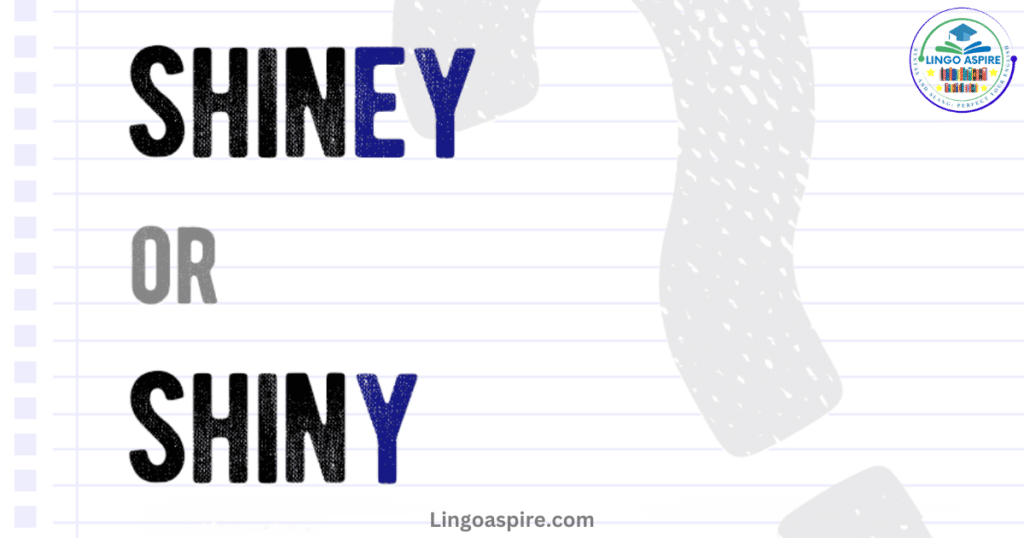
Here’s a quick guide to help you remember the difference:
| Aspect | Shiny | Shiney |
|---|---|---|
| Spelling Rule | Drops the “e” from “shine” | Keeps the “e” (wrong) |
| Meaning | Reflective, bright | Misspelled word |
| Example Usage | “The shiny car gleamed.” | “The shiney car gleamed.” (Wrong) |
| Professional Usage | Always correct | Never correct |
Conclusion
In summary, “shiny” is the correct spelling, while “shiney” is a common error. Understanding English spelling rules and adjective patterns can help you avoid mistakes. Using the right spelling not only improves your writing accuracy but also boosts your credibility in professional communication.
By paying attention to details and practicing proper usage, you can master tricky words like “shiny”. Remember, spelling is not just about rules—it’s about clear and effective communication.
Sources
- Merriam-Webster Dictionary
This trusted dictionary explains the definition, pronunciation, and correct spelling of “shiny” while clarifying common misspellings. - Cambridge English Dictionary
A reliable resource for understanding grammar insights, linguistic patterns, and common English spelling mistakes, including words like “shiny.” - Grammarly Blog
Grammarly offers in-depth explanations of English grammar rules, including adjective spelling patterns and the importance of spelling accuracy in professional communication.

